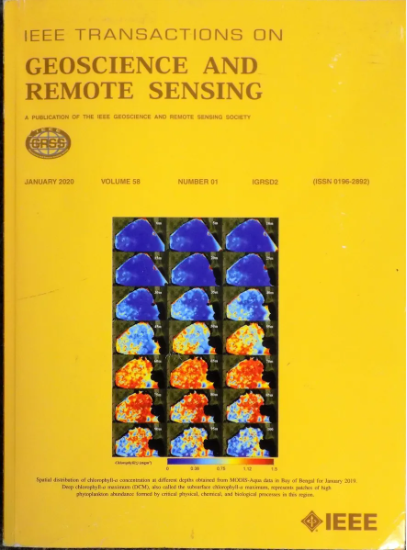用于遥感语义分割的多级多模态融合变换器
IF 7.5
1区 地球科学
Q1 ENGINEERING, ELECTRICAL & ELECTRONIC
IEEE Transactions on Geoscience and Remote Sensing
Pub Date : 2024-03-07
DOI:10.1109/TGRS.2024.3373033
引用次数: 0
摘要
遥感数据的准确语义分割对地球科学研究和应用的成功起着至关重要的作用。与传统的单模态技术相比,基于多模态融合的细分模型具有出色的性能,因此近来备受关注。然而,这些模型大多使用卷积神经网络(CNN)或视觉转换器(Vit)执行融合操作,导致局部-全局上下文建模和代表能力不足。本研究提出了一种名为 FTransUNet 的多层次多模态融合方案,通过将 CNN 和 Vit 整合到一个统一的融合框架中,为语义分割提供了稳健有效的多模态融合骨干。首先,通过卷积层和浅层特征融合(SFF)模块提取和融合浅层特征。然后,通过精心设计的融合 Vit(FVit)提取并融合表征语义信息和空间关系的深层特征。它在一个三阶段方案中交替应用自适应相互增强注意力(Ada-MBA)层和自我注意力(SA)层,以学习具有高类间可分性和低类内变异性的跨模态表征。具体来说,拟议的 Ada-MBA 可并行计算 SA 和交叉注意 (CA),以同时增强模态内和跨模态的上下文信息,同时将注意力分配到语义感知区域。因此,FTransUNet 能够以多层次的方式融合浅层和深层特征,充分利用 CNN 和转换器的优势,分别准确描述局部细节和全局语义。大量实验证实,在 ISPRS Vaihingen 和 Potsdam 这两个精细分辨率遥感数据集上,与其他多模态融合方法相比,所提出的 FTransUNet 具有更优越的性能。这项工作的源代码可在 https://github.com/sstary/SSRS 上获取。本文章由计算机程序翻译,如有差异,请以英文原文为准。
A Multilevel Multimodal Fusion Transformer for Remote Sensing Semantic Segmentation
Accurate semantic segmentation of remote sensing data plays a crucial role in the success of geoscience research and applications. Recently, multimodal fusion-based segmentation models have attracted much attention due to their outstanding performance as compared to conventional single-modal techniques. However, most of these models perform their fusion operation using convolutional neural networks (CNNs) or the vision transformer (Vit), resulting in insufficient local–global contextual modeling and representative capabilities. In this work, a multilevel multimodal fusion scheme called FTransUNet is proposed to provide a robust and effective multimodal fusion backbone for semantic segmentation by integrating both CNN and Vit into one unified fusion framework. First, the shallow-level features are first extracted and fused through convolutional layers and shallow-level feature fusion (SFF) modules. After that, deep-level features characterizing semantic information and spatial relationships are extracted and fused by a well-designed fusion Vit (FVit). It applies adaptively mutually boosted attention (Ada-MBA) layers and self-attention (SA) layers alternately in a three-stage scheme to learn cross-modality representations of high interclass separability and low intraclass variations. Specifically, the proposed Ada-MBA computes SA and cross-attention (CA) in parallel to enhance intra- and cross-modality contextual information simultaneously while steering attention distribution toward semantic-aware regions. As a result, FTransUNet can fuse shallow-level and deep-level features in a multilevel manner, taking full advantage of CNN and transformer to accurately characterize local details and global semantics, respectively. Extensive experiments confirm the superior performance of the proposed FTransUNet compared with other multimodal fusion approaches on two fine-resolution remote sensing datasets, namely ISPRS Vaihingen and Potsdam. The source code in this work is available at
https://github.com/sstary/SSRS
.
求助全文
通过发布文献求助,成功后即可免费获取论文全文。
去求助
来源期刊

IEEE Transactions on Geoscience and Remote Sensing
工程技术-地球化学与地球物理
CiteScore
11.50
自引率
28.00%
发文量
1912
审稿时长
4.0 months
期刊介绍:
IEEE Transactions on Geoscience and Remote Sensing (TGRS) is a monthly publication that focuses on the theory, concepts, and techniques of science and engineering as applied to sensing the land, oceans, atmosphere, and space; and the processing, interpretation, and dissemination of this information.
 求助内容:
求助内容: 应助结果提醒方式:
应助结果提醒方式:


